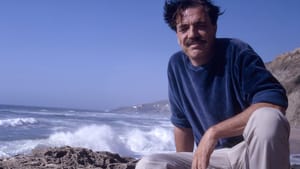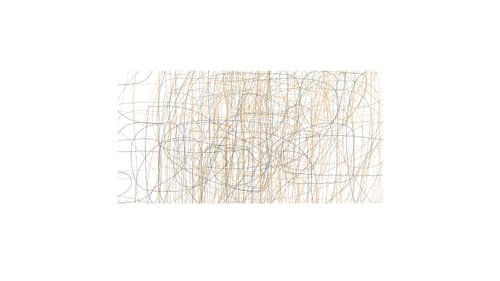Stay in the Loop
BSR publishes on a weekly schedule, with an email newsletter every Wednesday and Thursday morning. There’s no paywall, and subscribing is always free.
Earth's apostle
The University of Pennsylvania presents Ian McHarg in ‘One Planet, Three Exhibits’

Ian McHarg stepped to the microphone and did not mince words: “Man is an epidemic, destroying the environment upon which [he] depends and threatening his own extinction.” It was April 1970, and McHarg was addressing 30,000 people gathered on Belmont Plateau to mark the first Earth Day. Now we can rediscover him and his passions at Penn with One Planet, Three Exhibits.
McHarg (1920-2001), a landscape architect, had just written his 1969 ecological manifesto Design With Nature. With Rachel Carson’s Silent Spring in 1962, it sounded an environmental alarm, focusing worldwide attention on the damage humans inflict on the earth.
To introduce the tart-tongued visionary to new generations confronting environmental peril, the University of Pennsylvania’s Ian L. McHarg Center is presenting a special trio of exhibitions in celebration of the 50th anniversary of McHarg’s groundbreaking book.
McHarg rejected the religious teaching he’d heard as a child in Scotland—namely, that people were meant to subdue nature. Instead, he proposed the philosophy of stewardship: that humans should care for nature. Throughout his career, McHarg’s support for environmental stewardship was so vigorous that a colleague called him an “apostle for the planet” in the landscape planner’s 2001 New York Times obituary.
At work: The House We Live In
The man himself is revealed in Kroiz Gallery. The House We Live In consists of collected materials from McHarg’s 40 years teaching at Penn and as a principal of Wallace, McHarg, Roberts, and Todd. Among the items displayed are sketches for an ecological study of Staten Island (1968-69), the plaza of Philadelphia’s Pennsylvania State Office Building (1955-59), a landscape plan for Cheltenham Shopping Center (1959), and a study of storm effects on the Jersey shore (1962).
McHarg led Penn’s landscape architecture and regional planning department for 30 years, and among the classroom materials on view is his syllabus for Man and Environment, a seminal course in which McHarg talked with scientists representing the range of disciplines impacted by the built environment, including geologists, botanists, and anthropologists. The approach was so topical that CBS aired it as a 1960-61 television series, The House We Live In. Presumably, it was compelling viewing, if McHarg was as direct on camera as he was in person or in print: in a 1969 Life magazine interview he said, “Man is a blind, witless, low-brow anthropocentric clod who inflicts lesions upon the earth.”
As inspiration: Laurel McSherry: A Book of Days
Though McHarg spent most of his life in the Philadelphia area, he was born just outside Glasgow, near the River Clyde, a detail that informs the exhibit at Penn’s Arthur Ross Gallery by landscape architect and artist Laurel McSherry. A Fulbright Fellowship sent McSherry to the Glasgow School of Art for six months in 2018, and the resulting drawings, prints, video, and sculpture are on view.

Collectively, A Book of Days is a meditation on change wrought by time: the contraction and expansion of daylight across seasons, the corrosive consequences of acid, the patterns of daily walks, and the interaction of people with rivers.
Incremental change is the thread tying McSherry’s Glasgow explorations to McHarg’s environmental work, as in McSherry’s Dual Transect (2018-19), a 20-foot-long print comparing the Clyde with the Delaware. “It was only when I displayed all the layers simultaneously that I was able to see patterns and density in my markings,” the artist told Arthur Ross executive director Lynn Marsden-Atlass. This method echoes McHarg’s “idea of mapping landscape phenomena… in an effort to reveal relationships between and among them.” That includes the ways geology and climate influence hydrology, and in turn how and where “people settle on and use the land.”
A legacy: Design With Nature Now
Design With Nature Now: Five Themes, 25 Projects surveys international projects to showcase the lasting influence of McHarg’s environmentally sensitive approach to landscape design. Strategies are grouped by the threat targeted: biodiversity loss, sea-level rise, decreased water quality, pollution, and urban growth. The projects are collected in Design With Nature Now, a book to be published this fall.
Though most will lack time needed to absorb the detailed material here, even a cursory viewing yields the encouraging impression that across the world, evidence-based solutions are being developed and tested to repair, protect, and preserve all forms of life on the planet. For a world caught between relentlessly doomy predictions and willful ignorance, it’s a timely and badly needed sign of hope. People need to understand not only that problems exist, but that solutions are possible.
Like Africa’s Great Green Wall, a mass of trees planted along the edge of the Sahara to combat desertification. When complete in 2030, the wall will be the largest designed living structure on the planet. Equally heartening: The plan arose from a 2007 agreement among 20 African nations.
Meanwhile, in Denver, Colorado, the sprawling brownfield that was once Stapleton Airport is being transformed into a model community for responsible urban development. By 2021, Stapleton aims to be sustainable, walkable, and affordable, and will feature a stormwater system to support parks and native landscapes.

In Shandong Province, China, the city of Jining in 2013 completed a 15-square-mile water park near one of China’s largest and most polluted lakes to filter and purify water for a new urban center. And in the Netherlands, Zandmotor (Sand Motor) replenishes beaches using wind, waves, and currents, eliminating the need for continual dredging that disturbs the sea floor. The project is expected to continue through the 2030s.
Any medium available
Andrew C. Revkin, author of McHarg’s obituary, summarized the architect’s approach this way: “He used any medium available, including books and television, to impart his essential message: that no human action, be it building a highway, city, condominium or park, should proceed without a study of its suitability for the topography, vegetation, waterways, wildlife and other natural features of a site.”
Had the quick-witted, sharp-tongued, endlessly quotable McHarg lived long enough to use social media and the continuous news cycle, climate deniers and environmental destroyers would have been dispatched long ago.
What, When, Where
One Planet, Three Exhibits. Through September 15, 2019, at the University of Pennsylvania. Design With Nature Now at the Meyerson Galleries, 210 South 34th Street; Ian McHarg: The House We Live In at the Kroiz Gallery in the Architectural Archives of the Fisher Fine Arts Library, 220 South 34th Street; Laurel McSherry: A Book of Days at Arthur Ross Gallery, 220 South 34th Street. (215) 898-2083 or mcharg.upenn.edu/now.
Arthur Ross Gallery and the Architectural Archives in the Fisher Fine Arts Library are accessible by wheelchair from a path off of 34th Street from College Hall, and from the parking lot. Access the entrance through the Duhring Wing on the south side of the building across from Irvine Auditorium. For access assistance Monday through Friday, 10am to 5pm, call (215) 898-8322
The upper gallery of Meyerson Hall is wheelchair-accessible by an elevator at the entrance at 34th and Walnut Streets. The lower gallery is accessible by a ramp on the south side of the building.
Sign up for our newsletter
All of the week's new articles, all in one place. Sign up for the free weekly BSR newsletters, and don't miss a conversation.
